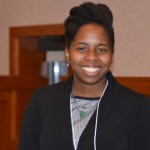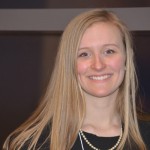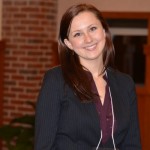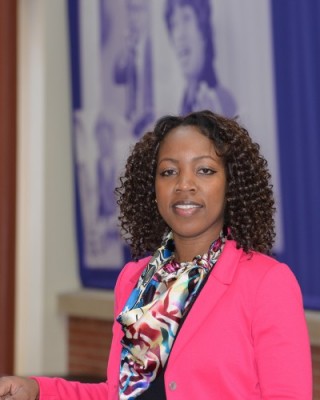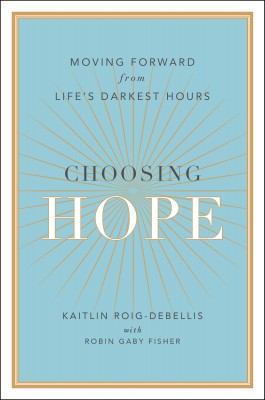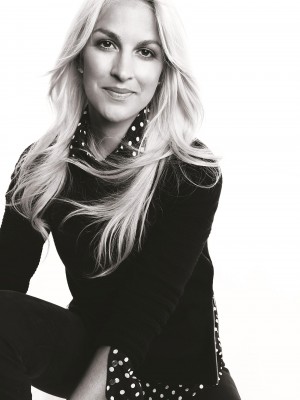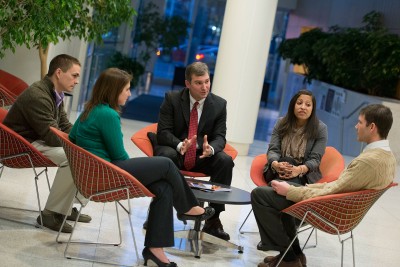 Below are news and notes from our alumni, faculty, staff, and students. We are proud of all the amazing accomplishments by our Neag family. If you have an accolade to share, we want to hear from you! Please send any news items (and story ideas) to neag-communications@uconn.edu
Below are news and notes from our alumni, faculty, staff, and students. We are proud of all the amazing accomplishments by our Neag family. If you have an accolade to share, we want to hear from you! Please send any news items (and story ideas) to neag-communications@uconn.edu
Alumni
Kathy Andrade `13 MA received the William R. Butler Administrator of the Year Award from the University of Miami. Each year, members of the University of Miami Student Government recognizes a staff member for excellence as an administrator and for their support of student success. Andrade formerly served as assistant director of student activities and student organizations at the University of Miami.
Javier Barragan `15 (ED) is working in video and scouting for the Staten Island Yankees.
Danny Buzzell `14 MA, Ashley Combs `09 (BA), `14 MA and Emmanuel Omokaro `11 (BA), `12 MA joined the incoming class of sport management master’s students for a panel discussion designed to share experiences and advice from the field. This panel was part of the master’s program orientation in August.
Robert Cole `15 (ED) completed a 10-month internship in the Harvard University athletic department.
John J. Connolly `63 MA was recognized as a “Top 50 Leader in Healthcare & Life Sciences” by Irish America Magazine. Connolly, the nation’s foremost expert on identifying top physicians, is the president and CEO of Castle Connolly Medical Ltd., publisher of America’s Top Doctors and other consumer guides to help people find the best healthcare. He is also vice chairman of Castle Connolly Graduate Medical Ltd., which publishes review manuals to assist resident physicians and fellows in preparing for their board exams. In 2015, he received the Distinguished Alumni Award from the Neag School of Education Alumni Society.
Kevin Corn `12 MA received the On Campus Service Award from Student Affairs Administrators in Higher Education (NASPA)’s Men and Masculinities Knowledge Community. The award recognizes the honoree’s efforts in making positive impacts for college men on campus and increasing college men’s involvement and engagement.
Scott Dempsey `14 (ED) `15 MA is an elementary teacher at Wilton Public Schools in Wilton, Conn. He previously worked for New Canaan Public Schools.
Thomas “TJ” Faeth `13 (ED) youth programs director for the Cheshire YMCA in Chesire, Conn., brought 50 students to UConn for a tour and a sport and nutrition clinic as a collaboration with Husky Sport staff and students.
Steven R. Frazier `00 Ph.D. was appointed interim president for Northwestern Connecticut Community College in Winchester, Conn. He was most recently the college’s dean of administration. Frazier brings 26 years of community college experience, and he served in his most recent position since 1995. He was also NCCC’s acting dean of students and an adjunct professor. At NCCC, Frazier supervises more than 50 budget, finance, and administrative personnel, while overseeing financial aid, purchases, budgets, and contracts. He has developed and implemented NCCC’s facilities master plan; established college policies on budget development; and successfully managed student affairs.
Robyn Kaplan Ginese `08 MA presented with Genius Labs in March at the 2015 American College Personnel Association (ACPA) National Conference in Tampa, Fla. Genius Labs selects experts to share their insight and knowledge about new technology in the field, and Ginese was selected due to her expertise with social media. She serves as director of leadership and experiential learning at Rutgers University.
Juliane Givoni `11 6th Year is assistant principal at Weston High School in Weston, Conn. She previously served as the instructional leader for humanities, fine, and performing arts at Joel Barlow High School in Redding, Conn., where she also oversaw the curriculum. The 2015 Region 9 Teacher of the Year, she also was a finalist for the Connecticut Teacher of the Year.
Sutha Kanagasingam `13 MA recently finalized her first research poster in relation to her doctoral studies at the University of Nebraska-Lincoln. Kanagasingam presented this body of research at the Great Lakes Counseling Psychology Conference at Ball State University in Muncie, Ind., in March.
Michael Mudrick `15 Ph.D. started his first year as an assistant professor at York College of Pennsylvania in York, Neb.
Desi Nesmith`01 (ED), `02 MA, `09 6th Year, a nationally recognized principal from Bloomfield, Conn., is now the chief school-turnaround officer for the Connecticut State Department of Education (CSDE).
Lora Parisi `14 6th Year is assistant principal at Eastern Middle School in Danbury, Conn., after serving in the role in an interim capacity since the start of the 2014-15 school year.
Thomas B. Roberts `67 MA is the co-editor and author of two chapters in The Psychedelic Policy Quagmire (ABC-CLIO, August 2015).
Christopher J. Silver `93 (ED) is the new director of leisure, families, and recreation for the Town of Manchester in Manchester, Conn. Silver had been the director of the office of neighborhoods and families since 2010. A major part of Silver’s new role will be collaborating with the school system on activities and programs.
Elizabeth Stagis ’06 (ED),’07 MA, an English teacher at East Hartford (Conn.) High School, received the Ann Garland West Excellence in Teaching Award from the National Association of Teachers of English (NEATE) in October. The award recognizes an educator with at least seven years of English/language arts teaching experience who exhibits extensive knowledge of his or her discipline, involvement in professional organizations, and an interest in challenging students.
Michael L. Vose `15 Ph.D. is the new director of instructional technology at Bethel Public Schools, in Bethel, Conn. Vose has extensive experience and expertise in the integration of technology into teaching and learning. A seasoned administrator from the Killingly Public Schools, Vose has served as an assistant principal and data team leader focusing on instructional design. Prior to his administrative position, he was a teacher for students requiring an alternative education, teaching English and social students at the secondary level.
Alicaa Waring `11 MA is an alternative education teacher, leading an in-school suspension program at a Wisconsin middle school.
Faculty
Five CBER researchers – Michael Coyne, Jennifer Freeman, Devin Kearns, Natalie Olinghouse, and Brandi Simonsen – are participating faculty members with the National Center for Leadership in Intensive Intervention (NCLII). The NCLII, a new consortium funded by the Office of Special Education Programs (OSEP), will prepare special education leaders to become experts in research on intensive intervention for students with disabilities who have persistent and severe academic (e.g., reading and math) and behavioral difficulties. Participating institutions include Vanderbilt University, Southern Methodist University, University of Connecticut, University of Illinois at Chicago, University of Minnesota, University of Texas at Austin, and Virginia Commonwealth University. NCLII scholars will participate in a core curriculum focused on intensive intervention and will contribute to the Intensive Intervention Network, a website designed to advance research on and implementation of intensive intervention.
CommPACT Schools received continued state funding for two more years.
The Neag School co-hosted a lecture with the Center for Health Intervention and Prevention (CHIP) on “Interconnecting School Mental Health and Positive Behavior Support” at the Storrs Campus in October.
The Neag School hosted a wrap-up celebration in September at Manchester Community College on Main for Bridging Practices among Connecticut Mathematics Educators (BPCME), a math-science partnership grant funded by the Connecticut State Department of Education. The partnership brought together educators from Hartford, Manchester, and Mansfield school districts with UConn faculty, doctoral students, and master’s interns to create a regional learning community to build teachers’ and teacher educators’ capacities to meet the Common Core State Standards.
Husky Sport hosted a panel of practitioners about trauma-sensitive practices across disciplines at Parker Memorial Center in Hartford, Conn., in August. The event included more than 50 representatives from Husky Sport and other community partners, gathering to discuss and better understand trauma in their work.
Alexandra “Sandy” Bell presented “Adult Learning: Considerations for Certification Exams and Applicator Training” at the 2015 Pesticide Safety and Applicator Training (PACT) conference in Philadelphia in August. She also co-presented “It’s What’s Inside That Counts: Brain-based Best Practices for Extension Education” at the 22nd European Seminar on Extension and Education, at Wageningen University in the Netherlands in May.
Eric Bernstein served as guest moderator for a Twitter chat in October, in which he and Marijke Kehrhahn engaged preservice teachers enrolled in the Neag School’s educational leadership graduate course “Teacher Leadership and Organization” (EDLR 5015). The educational Twitter chat, #edtherapy, focuses on educators supporting one another through the challenges of the profession in a safe, positive space. Chat co-founder Matt Mingle, an assistant superintendent in New Jersey, credited the Neag School’s student participants with helping to make it one of the most successful #edtherapy chats since its launch last year.
Laura Burton presented “Women in Leadership: Stereotypes and Gender Roles” at the University of Connecticut Women’s Advancement Conference in May. She also co-presented “Intersectorial Partnership in Disability Sport: A Case Study Examination” and “Only in Crisis? Leadership Selection in Intercollegiate Athletics After an Ethical Scandal” – both at the North American Society for Sport Management, in Ottawa, Canada, in June.
The Neag School welcomed colleagues from across the country who have been invited to serve on the NSF-funded Task Force on Conceptualizing Elementary Mathematical Writing: Implications for Mathematics Education Stakeholders. Tutita Casa is leading the task force – composed of school- and university-based educators whose expertise includes mathematics education, mathematics, writing education, science education, gifted education, special education, English language learners, and assessment and curriculum development – in discussions centered on identifying the types of and purposes for mathematical writing at the elementary level. The task force ultimately will prioritize the forms of writing they identify to guide those involved in this work and provide recommendations for future directions in this area.
Milagros Castillo-Montoya, Erica Fernández, Xaé Alicia Reyes, and Blanca Rincón received an El Instituto Grant of $1,500 from the University of Connecticut, to provide funding for Latinos in Education Foco – a community of scholars dedicated to the advancement of Latinos in education.
Milagros Castillo-Montoya has served as a reviewer for the Review of Higher Education and College Student Affairs Journal. She also served as a proposal reviewer for the Association for the Study of Higher Education (ASHE) 2015 conference as well as proposal reviewer for the American Educational Research Association (AERA) 2016 annual meeting. In addition, she started serving this summer as a co-chair of the UConn Intergroup Dialogue Taskforce – a group comprising EDLR faculty, a HESA student, and Division of Student Affairs staff charged with attending the Michigan National Institute on Intergroup Dialogue and considering how this model can be applied to EDLR and Division of Student Affairs.
Casey Cobb, Jennie Weiner, and Richard Gonzales collaborated on an invited chapter for the Handbook of Research on the Education of School Leaders. Casey Cobb and Richard Gonzales also served as peer reviewers for other chapters in the handbook.
Joseph Cooper and Shaun Dougherty published “Does race still matter?: A post bowl championship series (BCS) era examination of student athletes’ experiences at a Division I historically Black colleges/university (HBCU) and predominantly White institution (PWI)” in the Journal of Issues in Intercollegiate Athletics.
Joseph Cooper published “Strategies for student athlete success at historically Black colleges and universities” in Making the Connection: Data-Informed Practices in Academic Support Centers for College Athletes, edited by Eddie Comeaux (Information Age Publishing, 2015). Cooper also co-wrote the chapter “Athletic Migration Experiences of Black Athletes” in The Athletic Experience at Historically Black Colleges and Universities (HBCUs): Past, Present, and Persistence (Rowan & Littlefield, 2015), for which he served as co-editor.
Michele Femc-Bagwell was an invited panel participant at the 2015 Institute for Educational Leadership’s Family and Community Engagement Conference in Chicago in June. She also was the co-strand facilitator for the Leaders’ Forum at Confratute and a workshop presenter at the Windsor Public Schools Teacher Leadership Corps training for teacher leaders. She completed the Executive Leadership Program in July and is currently collaborating with Erica Fernández on a photo ethnography study, “Do You See What I See: Parents’ Perceptions of Engagement in Schools.”
Jennifer Freeman, Brandi Simonsen, D. Betsy McCoach, George Sugai and Allison Lombardi, as well as Rob Horner from the University of Oregon, co-wrote “An Analysis of the Relationship Between Implementation of School-wide Positive Behavior Interventions and Supports and High School” in The High School Journal.
Rachael Gabriel, along with a colleague, edited Evaluating Literacy Instruction: Principles and Promising Practices (Routledge Publishing, 2016).
Wendy Glenn was a featured speaker at Eastern Connecticut State University’s presentation on “7 Days and Nights to Investigate, Navigate, Debate and Celebrate Banned Literature” at the Willimantic campus, in October.
Robin Grenier, along with adult learning program alum Kevin Thompson and current ALP doctoral candidate Brian Hentz, gave an invited presentation to the Connecticut Training and Development Network in Hartford, Conn. Grenier has taken over courses in the Graduate Certificate in College Teaching. She also co-published “Facilitating Workplace Learning and Change: Lessons Learned From the Lectores in Pre-war Cigar Factories” in the Journal of Workplace Learning, as well as co-published “A Conceptual Model for Eliciting Mental Models Using a Composite Methodology” in the Human Resource Development Review.
Mark Kohan and Susan Payne have been selected as 2015 Office of Public Engagement’s Service Learning Fellows. They have a new service learning course that starts in the Spring of 2016.
Patricia Jepson, director of the Academic Advisory Center in the College of Agriculture and Natural Resources, received the Outstanding Service Citation from the National Association of Agricultural Educators. The award recognizes current and retired NAAE members who have made significant contributions to agricultural education at the state, regional, and national levels with the Outstanding Service Citation. Jepson has been a partner with the Teacher Certification Program for College Graduates, by overseeing the animal science curriculum in the Program.
Marijke Kehrhahn and Alexandra “Sandy” Bell presented “Measuring Transfer of Training: Employing the Levels of Use Inventory” at the 16th International Conference on Human Resource Development Research and Practice across Europe, at University College Cork, Ireland, in June.
Allison Lombardi gave the keynote speech at the Connecticut Secondary Transition Summer Symposium in West Hartford, Conn., in July. Her presentation, entitled “An Organizing Framework of College and Career Readiness for Secondary Students with Disabilities,” focused on the notion of evolving vocational education and summarized recent transition research, including the development of six constructs of college and career readiness: critical thinking, engagement, mindsets, learning processes, social skills, and transition competencies; as well as multi-tiered approaches to service delivery. In addition, her latest article, “Correlates of Critical Thinking and College and Career Readiness for Students With and Without Disabilities,” is included in the Dec. 2015 issue of the journal Career Development and Transition for Exceptional Individuals.
Jennifer McGarry co-published “A Multilevel Analysis of a Campus-Community Partnership” in the Journal of Service Learning in Higher Education. She also co-presented “Positive Results Still Call for Critical Evaluation: A Post-Event Assessment of a Sport-for-Development Initiative” at the North American Society for Sport Management (NASSM) Ottawa, Ontario, in June.
Jonathan Plucker, Ronald Beghetto, and James Kaufman, along with graduate students Anna Dilley, Joshua Fishlock, and Clint Kennedy, wrote and released a series of research briefs on “4Cs: Creativity, Critical Thinking, Communication, and Collaboration” through the P21 Partnership for 21st Century Learning.
Jonathan Plucker co-wrote “An Introduction to Replication Research in Gifted Education: Shiny and New Is Not the Same as Useful” in Gifted Education Quarterly.
Blanca Rincón has been selected to join the Review Board for the Research in Brief and On the Campus sections of the Journal of College Student Development.
Students
The Student Association of School Psychologists (SASP) and Neag School faculty member George Sugai co-hosted an afternoon coffee hour with guests featuring Mark Weist, who was a speaker for Center for Health, Intervention, and Prevention (CHIP), in October at the Storrs campus.
Theus McBee, sport management major, completed a summer internship with the NBA.
In Memoriam
Joseph G. Bielawski `55
Bonnie V. Cook `79
Robert A. Fischer Jr. `51
Lois Y. Galbraith `47
Martin D. Godgart `64
Donna C. Hetzel `78
Mary V. Joly `57
Joseph F. Levanto `73
Joe Morrone (faculty emeriti)
Marilyn S. Nesmith `01
Nils G. Peterson `61
Marie A. Ponzillo `74
Eleanor V. Sullivan `59
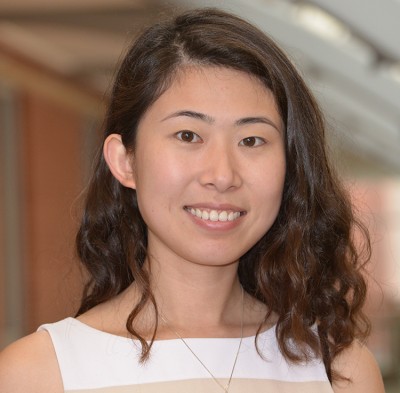
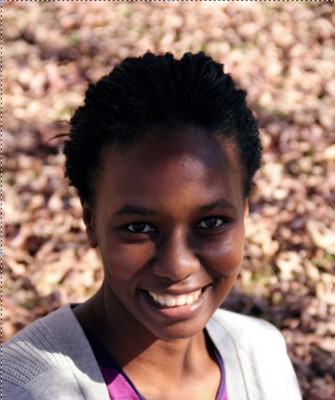

 Below are news and notes from our alumni, faculty, staff, and students. We are proud of all the amazing accomplishments by our Neag family. If you have an accolade to share, we want to hear from you! Please send any news items (and story ideas) to neag-communications@uconn.edu
Below are news and notes from our alumni, faculty, staff, and students. We are proud of all the amazing accomplishments by our Neag family. If you have an accolade to share, we want to hear from you! Please send any news items (and story ideas) to neag-communications@uconn.edu
